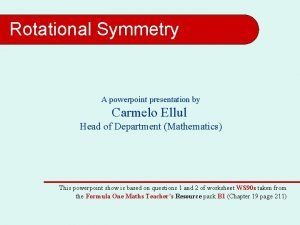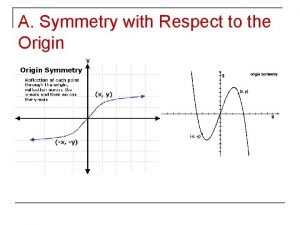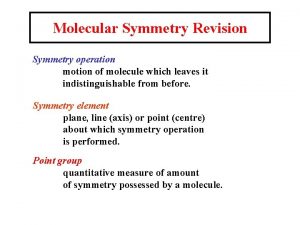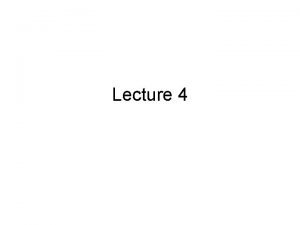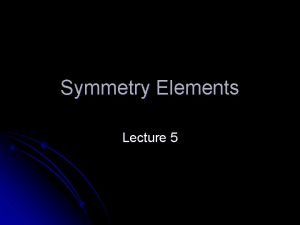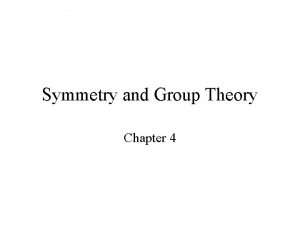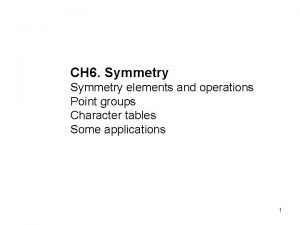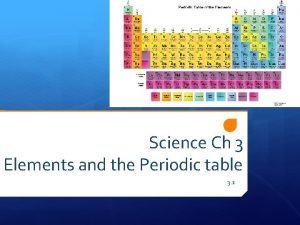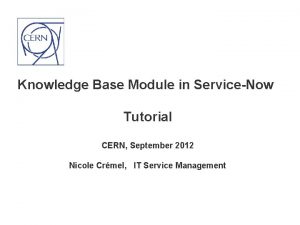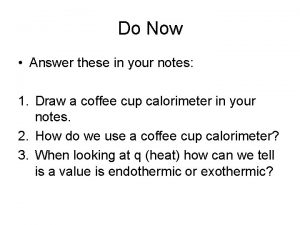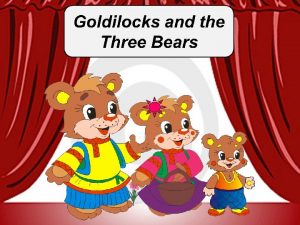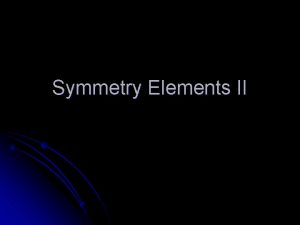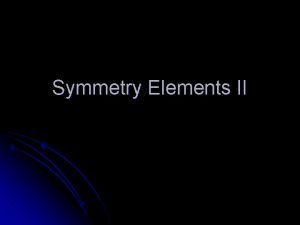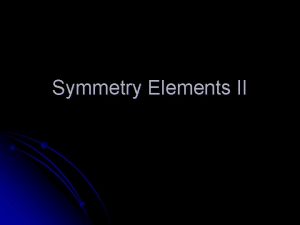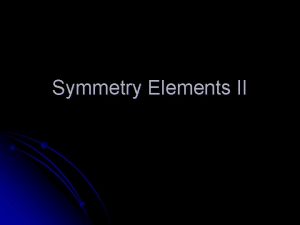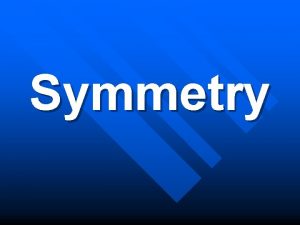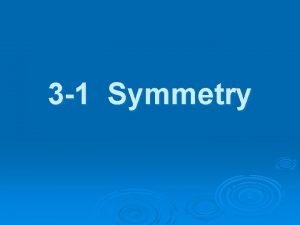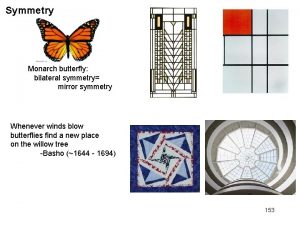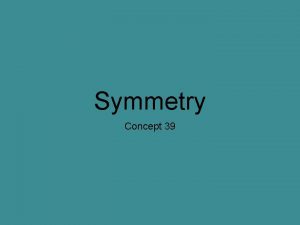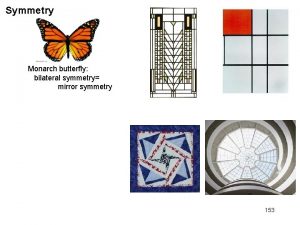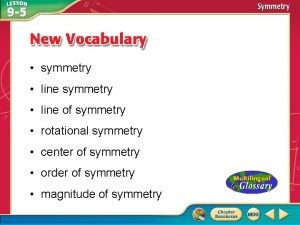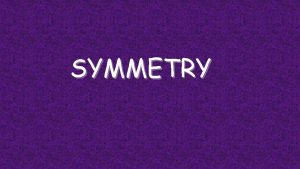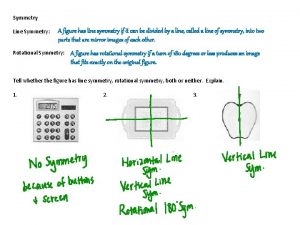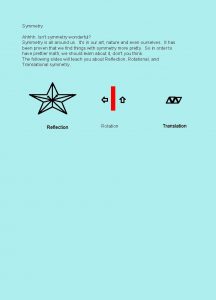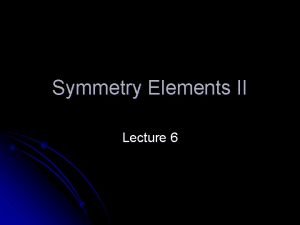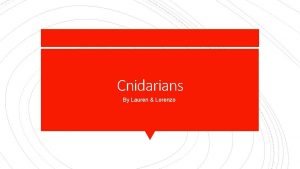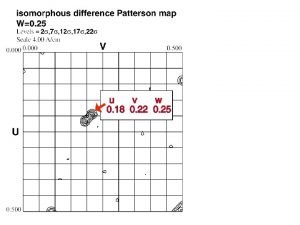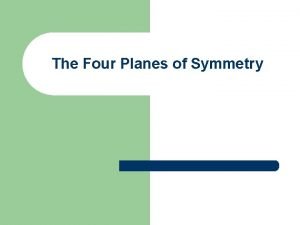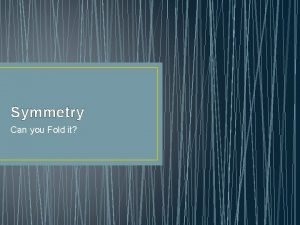Symmetry Elements II 3 D Symmetry We now

































- Slides: 33

Symmetry Elements II

3 -D Symmetry We now have 8 unique 3 D symmetry operations: 1 2 3 4 6 m 3 4 Combinations of these elements are also possible A complete analysis of symmetry about a point in space requires that we try all possible combinations of these symmetry elements

Point Group l The set of symmetry operations that leave the appearance of the crystal structure unchanged. l There are 32 possible point groups (i. e. , unique combinations of symmetry operations).

2 -D Symmetry Try combining a 2 -fold rotation axis with a mirror The result is Point Group 2 mm “ 2 mm” indicates 2 mirrors The mirrors are different

2 -D Symmetry Now try combining a 4 -fold rotation axis with a mirror

2 -D Symmetry Now try combining a 4 -fold rotation axis with a mirror Step 1: reflect

2 -D Symmetry Now try combining a 4 -fold rotation axis with a mirror Step 1: reflect Step 2: rotate 1

2 -D Symmetry Now try combining a 4 -fold rotation axis with a mirror Step 1: reflect Step 2: rotate 2

2 -D Symmetry Now try combining a 4 -fold rotation axis with a mirror Step 1: reflect Step 2: rotate 3

2 -D Symmetry Now try combining a 4 -fold rotation axis with a mirror Any other elements?

2 -D Symmetry Now try combining a 4 -fold rotation axis with a mirror Any other elements? Yes, two more mirrors

2 -D Symmetry Now try combining a 4 -fold rotation axis with a mirror Any other elements? Yes, two more mirrors Point group name? ?

2 -D Symmetry Now try combining a 4 -fold rotation axis with a mirror Any other elements? Yes, two more mirrors Point group name? ? 4 mm Why not 4 mmmm?

2 -D Symmetry 3 -fold rotation axis with a mirror creates point group 3 m Why not 3 mmm?

2 -D Symmetry 6 -fold rotation axis with a mirror creates point group 6 mm

2 -D Symmetry The original 6 elements plus the 4 combinations creates 10 possible 2 -D Point Groups: 1 2 3 4 6 m 2 mm 3 m 4 mm 6 mm Any 2 -D pattern of objects surrounding a point must conform to one of these groups

3 -D Symmetry As in 2 -D, the number of possible combinations is limited only by incompatibility and redundancy There are only 22 possible unique 3 -D combinations, when combined with the 10 original 3 -D elements yields the 32 3 -D Point Groups

3 -D Symmetry The 32 3 -D Point Groups Every 3 -D pattern must conform to one of them. This includes every crystal, and every point within a crystal Table 5. 1 of Klein (2002) Manual of Mineral Science, John Wiley and Sons

Crystal Systems l A grouping point groups that require a similar arrangement of axes to describe the crystal lattice. | l There are seven unique crystal systems.

3 -D Symmetry The 32 3 -D Point Groups Regrouped by Crystal System Table 5. 3 of Klein (2002) Manual of Mineral Science, John Wiley and Sons

Triclinic l Three axes of unequal length l Angles between axes are not equal l Point group: 1

Monoclinic l Three axes of unequal length l Angle between two axes is 90° l Point groups: 2, m, 2/m

Orthorhombic l Three axes of unequal length l Angle between all axes is 90° l Point groups: 222 2/m/2/m, 2 mm

Tetragonal l Two axes of equal length l Angle between all axes is 90° l Point groups: 4, 4, 4/m, 4 mm, 422, 42 m, 4/m 2/m

Hexagonal l Four axes, three equal axes within one plane l Angle between the 3 co-planar axes is 60° l Angle with remaining axis is 90° l Point groups: 6, 6, 6/m, 6 mm, 622, 62 m, 6/m 2/m

Trigonal (Subset of Hexagonal) l Four axes, three equal axes within one plane l Angle between the 3 co-planar axes is 60° l Angle with remaining axis is 90° l Point groups: 3, 3, 3/m, 32/m

Cubic / Isometric l All axes of equal length l Angle between all axes is 90° l Point groups: 23, 423, 2/m 3, 43 m, 4/m 32/m

Crystal System Characteristics l Isometric/Cubic l Hexagonal l Tetragonal l Orthorhombic l Monoclinic l Triclinic ALL AXES EQUAL AXES UNEQUAL

Birefringence l Isometric/Cubic l Hexagonal l Tetragonal l Orthorhombic l Monoclinic l Triclinic ISOTROPIC ANISOTROPIC

Crystal System Characteristics l Isometric/Cubic l Hexagonal l Tetragonal l Orthorhombic l Monoclinic l Triclinic ALL AXES EQUAL TWO AXES EQUAL ALL AXES UNEQUAL

Interference Figure l Isometric/Cubic l Hexagonal l Tetragonal l Orthorhombic l Monoclinic l Triclinic UNIAXIAL BIAXIAL

Crystal System Characteristics l Isometric/Cubic l Hexagonal l Tetragonal l Orthorhombic l Monoclinic l Triclinic ALL AXES EQUAL AXES ORTHOGONAL AXES NON-ORTHOGONAL

Extinction l Isometric/Cubic l Hexagonal l Tetragonal l Orthorhombic l Monoclinic l Triclinic PARALLEL INCLINED
 Symmetry in nature ppt
Symmetry in nature ppt Now i see it now you don't
Now i see it now you don't Symmetry with respect to origin symmetry
Symmetry with respect to origin symmetry C2h point group multiplication table
C2h point group multiplication table Point groups chemistry
Point groups chemistry 2 fold rotoinversion
2 fold rotoinversion Construction of character table for c3v point group
Construction of character table for c3v point group Sf5 point group
Sf5 point group Http //elements.wlonk.com/elements table.htm
Http //elements.wlonk.com/elements table.htm Literary elements of drama
Literary elements of drama What are the elements of folktale?
What are the elements of folktale? Overhead allocation
Overhead allocation Where is the setting of the folktale?
Where is the setting of the folktale? Molecular element
Molecular element Now tra
Now tra In your notebook write question and answers
In your notebook write question and answers Servicenow knowledge management
Servicenow knowledge management Which way now
Which way now Stop it now modules
Stop it now modules They used to laugh with their hearts
They used to laugh with their hearts Marrie miller connell
Marrie miller connell Still hide me now
Still hide me now Windows connect now
Windows connect now Our love now
Our love now Coffee cup calorimeter
Coffee cup calorimeter The darkness drops again but now i know
The darkness drops again but now i know Agriculture then and now
Agriculture then and now Guardsman tromans now
Guardsman tromans now That was then this is now summary
That was then this is now summary Graph equations
Graph equations Goldilocks was very tired now en español
Goldilocks was very tired now en español Then and now grammar
Then and now grammar Advantages of icon based authoring tool
Advantages of icon based authoring tool Cern service now
Cern service now
